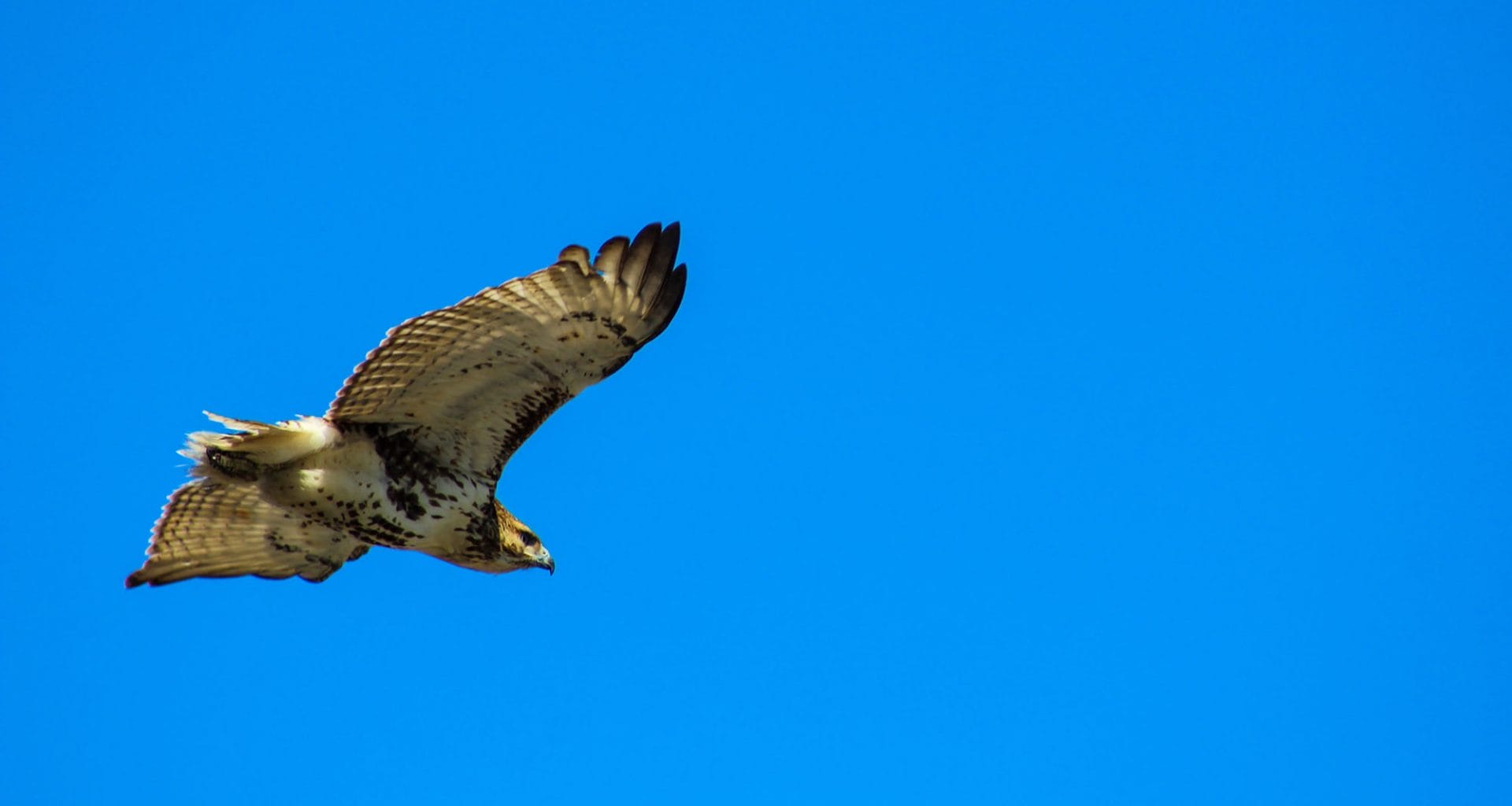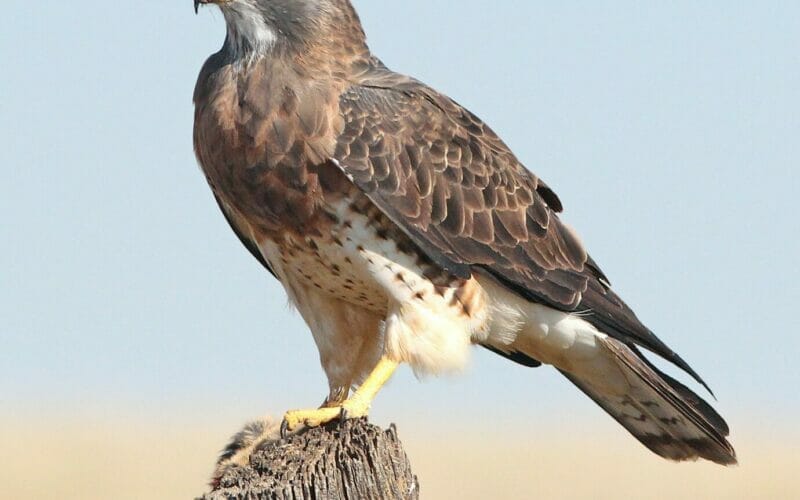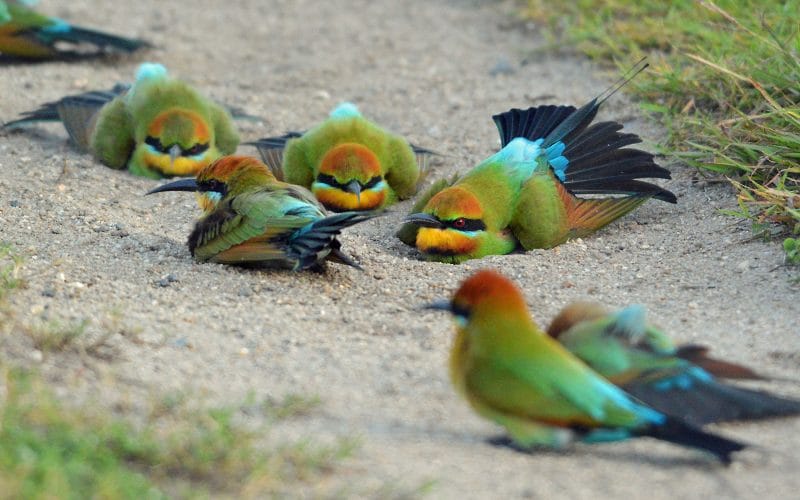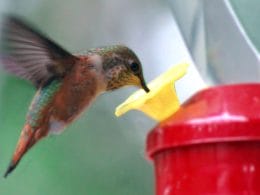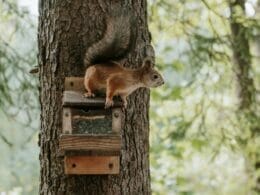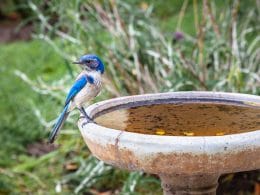Look up! Is that a crow or a bird of prey? Often times when you see a bird circling, it is a hawk. So why do hawks circle?
There are many reasons why hawks circle. Typically, hawks fly in a circle when they are hunting for prey or making the most out of the thermals.
Want to learn more about why do hawks circle and other fun hawk facts? You’ve come to the right place!
What Does It Mean When a Lone Hawk is Circling?

If you look up and see a lone hawk circling you, don’t panic! The hawk is most likely seeking some food, whether in the form of a shrew or a little bird. And if you are superstitious, don’t be surprised if you notice the hawk at auspicious times. Hawks are connected to many subtle spiritual messages, and it could be a message of affirmation or a blessing.
Although hawks have a strong tie to symbolism, there are many practical reasons why hawks circle. The thermals we have already briefly mentioned, but we will get more into the physics of that in just a bit. The second common reason is that they are looking for prey. Let’s see what a hawk eats and if you need to be careful of your cats or dogs.
What Are Thermals?
The thermals are warm currents many birds use to glide with the air. The air currents are warm thermals that rise upwards, offering large birds a ride without a single flap of wings.
Smaller birds, such as doves, will also briefly make use of these types of air currents. Large birds such as the vulture are notorious for lazily hitching a ride on these currents.
The Eerie Screech
Author Note: Red-tail Hawks are known as the main screamers of the hawk family. The red-tail screech is a well-known scream amongst avid birders. The rest of the bird kingdom is all too familiar with it as well. But why do hawks screech?
If you guessed as a territorial thing, you’d be correct. Red-Tail Hawks are well known for their scream that they use to ward off posing threats. This screech is used to ensure other animals know of their territory.
When hawks are nesting, they will screech when danger is approaching. This screech either lets their mate know that danger is near or warns the impending threat to retreat.
What Attracts Hawks?
If you are looking to attract hawks to your yard, you should know what hawks enjoy hunting. Most hawks will be drawn to a garden filled with finches, doves, and sparrows. There are specific types of feed and feeders available.
These will attract these birds to your yard, in turn attracting the hawks. But other birds aren’t the only attractive food source for hawks. Hawks are also known to hunt rodents and insects too. And yes, you guessed it. You can attract this type of prey by using food.
Do Hawks Eat Cats?
One common question on every car owner’s mind is whether they should worry about a hawk snatching up their purr-ey friend.
While hawks can snatch cats, this does not happen often. Hawks will usually hunt on animals in the wild and won’t hunt close to your house. But remember, the hawk is a bird of prey with the capability to snatch a backyard cat. So, while it is uncommon, it could still happen.
How Long Do Hawks Stay in One Area?
If you have seen a pair of hawks in your area, you might know hawks tend to pick a spot and remain there. Hawks will also choose a lifelong mate and will forge strong bonds to their nest territory.
Hawks construct their nests well and the nests are typically sturdy. There are some cases where the same pair, with the same nest, remain for decades.
Can a Hawk Pick up a Dog?

This is another common question pet owners often ask. Large raptors (owls, hawks, eagles) are able to target animals the size of small dogs. While this is not a common occurrence, it should not be ruled out.
And, if you see a hawk circling your puppy, it’s better to intervene. That’s a course of nature you don’t want to enable.
An Easy Lift in The Sky
And here we are back at the thermals, one of the main reasons hawks tend to circle.
Thermals instigate hawks and other birds to ride the currents, helping them to conserve energy.
But why in a circle? The circular motion is so that the birds can flow with the current. The currents spiral circularly upwards, creating rising torrents of warm air. The birds hitch a ride and flow with the current with barely a flap of a wing. This allows the birds to rise higher in the sky and conserve their energy while they do.
Migrating birds also make use of these thermals in their travels. The thermals help the birds to rise in altitude with little to no effort. By conserving this energy, the flock can fly farther and expand their migration. You’ll often see a lone soldier flying high in the sky, lazily circling from above.
These solitary figures are often hunting hawks or eagles. Again, by conserving energy, they can hunt for more extended periods of time.
How Are Thermals Made?
Author Note: Although they may seem like phenomena, thermals follow the fundamental laws of physics. Nothing in nature is uniform, and this includes air. The air close to the ground is heated unevenly, and this uneven hot air is where the thermals come from.
Both uneven terrain and man constructed buildings will result in thermals. So, you could see birds ride them in both the city and the great outdoors.
Where Are Thermals Mostly Found?
Thermals are often found on a hillside because of the difference in heat. The side being warmed by the sun will have warmer air than the shaded side. This is similar to how the sun heats a building’s surface, with a building’s shady side having cooler air.
Whether in a city or a hillside, this discrepancy in air temperature results in convective currents. In simple terms, the air starts to move in a circular spiral.
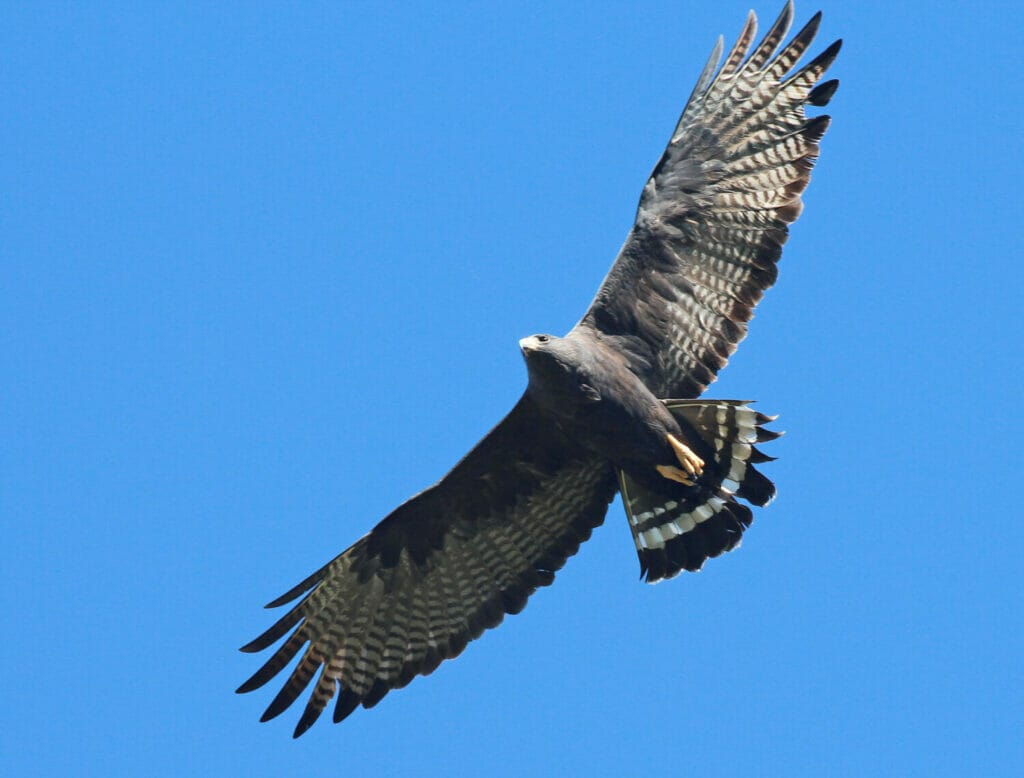
How It Works
If you want to skip the science bit, go ahead! For those that are interested, here’s a quick breakdown of the backbones of thermals.
If you paid any attention at all in school, you know that warm air has a lower density than cooler air. No? How about hot air rising? There we go. The hot air rises because it has this lower density. When we are examining air, we see that the rising air, called updrafts, created the thermals. It’s much simpler than you expected, right?
However, higher altitudes equals colder air. So, as this hot air rises in the updraft, it eventually cools as the altitude climbs. When the air reaches a certain temperature, it stops rising. And what happens then?
As the temperature decreases, the density increases, and the air cannot rise any longer. The cooler air moves back down towards the ground. The updrafts continue to rise with the sun’s warmth and fall back down as they cool down. This process is known as convective circulation.
Vortex Thermals
But that’s just one type of thermal. The second is called a vortex-ring or a bubble thermal. While this second thermal also begins at the ground, it separates and becomes a self-contained bubble. The warm bubble of air rises, and as it rises, it expands due to the lower atmospheric pressure.
But while the decreasing pressure makes the bubble of warm air grow, it eventually causes the bubble to disperse when the pressure drops too low.
Slope Soaring

Author Note: There is a third air-related reason for the ominous circling hawks. Instead of a type of thermal, the third flying phenomenon is known as slope soaring. So far, we have already discovered that buildings, hills, and obstacles in general change how air flows.
We see this in nature when winds come into one side of a hill. When the wind is coming straight onto the side, the air will then flow upwards. Birds often take advantage of this natural escalator and use it to reach altitudes with little effort. Birds can do this slope surfing with a large wave, a grove, a hub of tall buildings, and yes, cliffs and hills.
If you’ve ever seen pelicans flying directly towards a dangerous cliff face, you’ve seen them make use of slope soaring. The birds will generally fly straight towards the ‘obstacle,’ where they will be carried up high with the deflected air.
But it is uncommon to see large birds like hawks slope soaring. Hawks tend to stick with the thermals, while the smaller birds will use the slopes to soar. But birds are not the only creature to make use of mother nature’s laws. Pilots and paragliders often use slope soaring principles during their flight.
Conclusion
Whether used by human flyers or birds, it’s readily agreed that thermals are convenient gifts from nature. Thermals help birds (and humans) to reach high altitudes with minimal effort. It is common to see a wide array of bird species flying in these spirals with pilots, and it is a beautiful sight for sure.
Hawks are respected by most people for reasons they may or not be able to explain. Whether out of sheer respect, or some sort of mystical reverence for these hunters, almost everyone stops to take in the sight of a circling hawk.
We hope you enjoyed this article on why do hawks circle.
Fly high friends!
FAQ
The Turkey Vulture (who also loves thermals) can be mistaken for a hawk from a distance. The vultures have distinctive V shaped wings in flight.
Sure, they sometimes hunt on the ground or eat the prey they have caught. There is no reason to be concerned if you see a hawk on the ground.
Absolutely. When they are circling, they could well be looking for small mammals on the ground to hunt.




